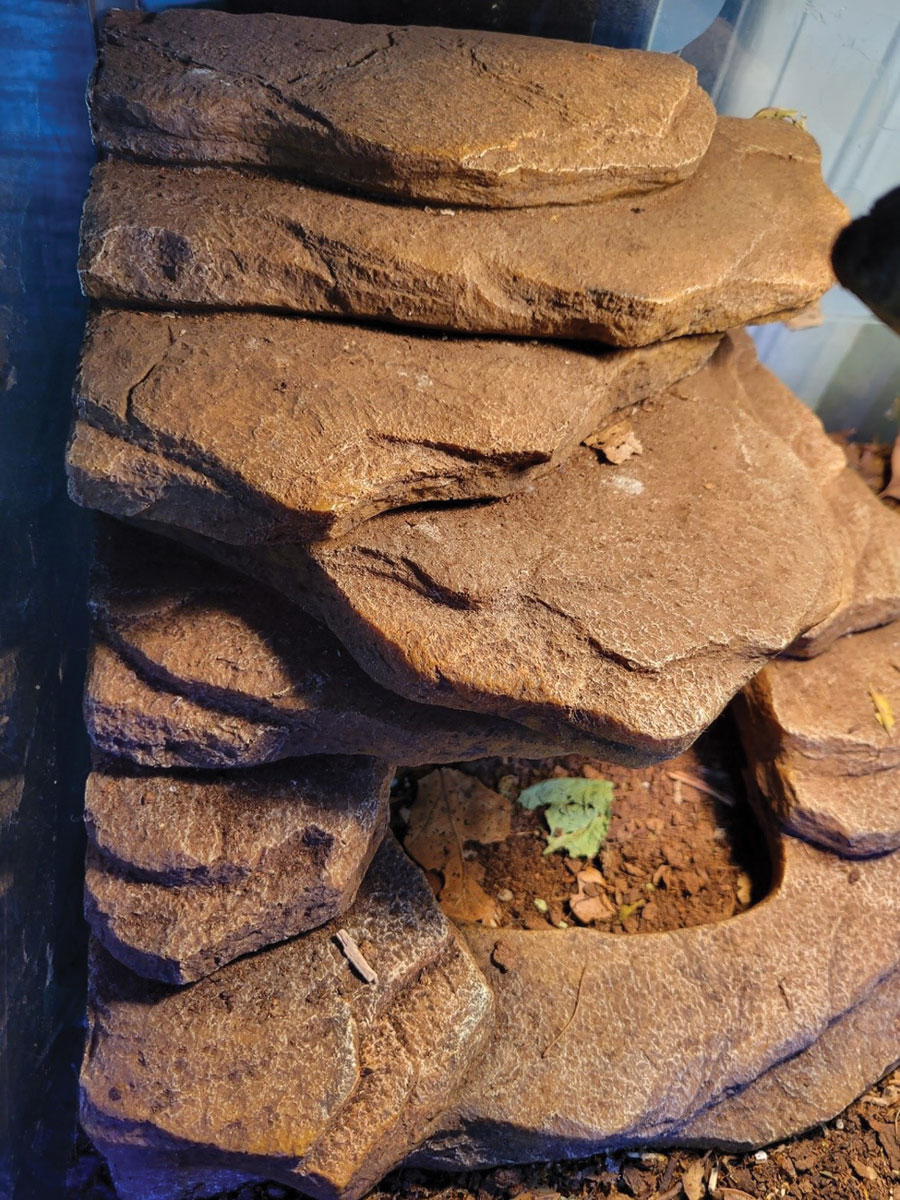Volume 30, Number 2—February 2024
Synopsis
Salmonella Vitkin Outbreak Associated with Bearded Dragons, Canada and United States, 2021–2022
Figure 1

Figure 1. Bearded dragon rock cave, source of the environmental isolates that were closely related to the outbreak strain of Salmonella enterica serovar Vitkin found in patients in Ontario, Canada, 2022. The environmental isolates were within 1 and 2 alleles by core-genome multilocus sequence typing to those from the patients.
Page created: December 19, 2023
Page updated: January 24, 2024
Page reviewed: January 24, 2024
The conclusions, findings, and opinions expressed by authors contributing to this journal do not necessarily reflect the official position of the U.S. Department of Health and Human Services, the Public Health Service, the Centers for Disease Control and Prevention, or the authors' affiliated institutions. Use of trade names is for identification only and does not imply endorsement by any of the groups named above.